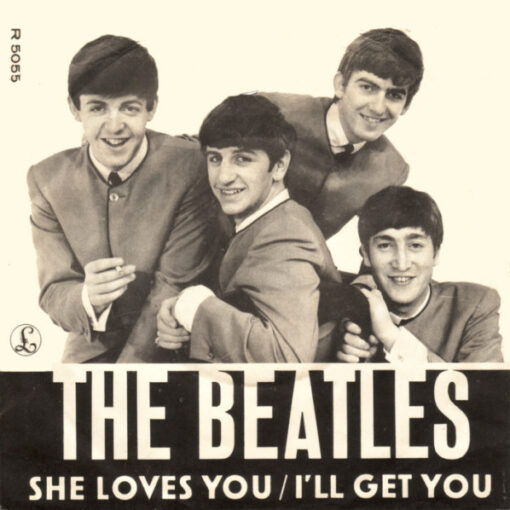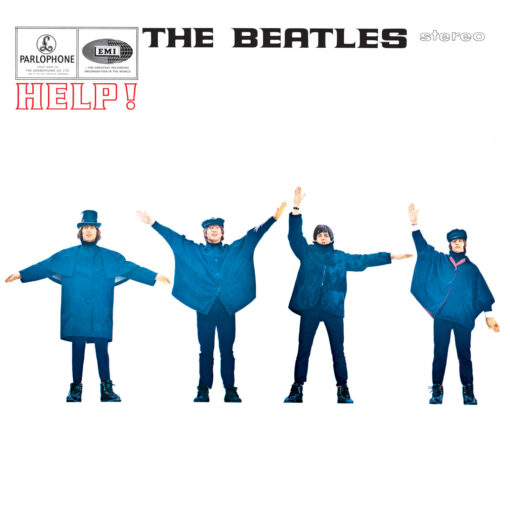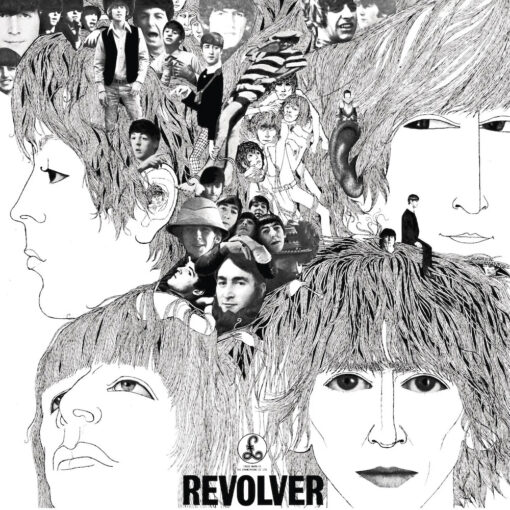- Published on 1966
- Author: Lennon/McCartney
- Track 2 on “Revolver“
- Track 25 on “1962 ‐ 1966 (Red Album)“
PAUL 1966: “I was sitting at the piano when I thought of it. The first few bars just came to me, and I got this name in my head… Daisy Hawkins picks up the rice in the church. I don’t know why. I couldn’t think of much more so I put it away for a day. Then the name Father McCartney came to me, and all the lonely people. But I thought that people would think it was supposed to be about my Dad sitting knitting his socks. Dad’s a happy lad. So I went through the telephone book and I got the name McKenzie. I was in Bristol when I decided Daisy Hawkins wasn’t a good name. I walked ’round looking at the shops, and I saw the name Rigby. Then I took the song down to John’s house in Weybridge. We sat around, laughing, got stoned and finished it off.”
JOHN 1980: “Paul’s baby, and I helped with the education of the child… The violin backing was Paul’s idea. Jane Asher had turned him on to Vivaldi, and it was very good.”
PAUL 1984: “I got the name Rigby from a shop in Bristol. I was wandering round Bristol one day and saw a shop called Rigby. And I think Eleanor was from Eleanor Bron, the actress we worked with in the film ‘Help!’ But I just liked the name. I was looking for a name that sounded natural. Eleanor Rigby sounded natural.”
About “Eleanor Rigby”
“Eleanor Rigby” was primarily written by Paul McCartney and credited to Lennon–McCartney and continued the Beatles’ transition from a pop-rock to an experimental, studio-based band. Featuring George Martin’s double string quartet arrangement and lyrics describing loneliness, this song breaks both musical and lyrical conventions. The single “Eleanor Rigby” topped the charts in Australia, Belgium, Canada, and New Zealand.
It was McCartney who composed the melody and first verse of the song, which he presented to the other Beatles in the music room of John Lennon’s Kenwood home. Ringo Starr, Lennon’s childhood friend Pete Shotton, and George Harrison all listened to McCartney play his song. It was Harrison who came up with the “Ah, look at all the lonely people” hook. It was Starr who suggested that “Father McCartney” darn his socks by writing the words of a sermon that no one would hear. Shotton then suggested that McCartney change the name of the priest, in case listeners mistook the fictional character for McCartney.
McCartney was unable to decide how to end the song, and Shotton suggested that the two lonely people come together too late as Father McKenzie conducts Eleanor Rigby’s funeral. Initially, Lennon rejected the idea, but McCartney used it, later acknowledging Shotton’s contribution. According to Lennon, the lyrics were finalized in the studio after McCartney sought input from Neil Aspinall and Mal Evans, the Beatles’ longtime road managers.
The Beatles released the record in the United States at the same time as their final tour and a public outcry over Lennon’s remarks that the Beatles had become more popular than Christ; he also predicted Christianity’s demise and described its followers as “thick and ordinary”. Particularly in the southern US, some radio stations refused to play Beatles records or burn Beatles memorabilia in public bonfires.
The double A-side (Elenor Rigby/Yellow Submarine) topped the Record Retailer chart for four weeks, becoming their eleventh number-one single, and Melody Maker’s chart for three weeks. The song topped the charts in Australia as well. Other countries also charted the single, although “Yellow Submarine” was usually the listed side. After the radio boycott was lifted, disc jockeys in the US began to flip the single midway through the tour. Billboard’s Hot 100 ranked “Eleanor Rigby” at number 11 for two weeks, and “Yellow Submarine” at number 2.
Meaning of “Eleanor Rigby”
The song tells the story of two lonely individuals, Eleanor Rigby and Father McKenzie, who live in close proximity but are disconnected from each other and the world around them. Eleanor Rigby is a woman who lives a solitary life, and Father McKenzie is a clergyman who conducts church services to an empty congregation. The song highlights the theme of isolation and the challenges of human connection.
The chorus, “All the lonely people, where do they all come from? All the lonely people, where do they all belong?” underscores the central theme of the song.
“Eleanor Rigby” is known for its poignant lyrics and melancholic melody, and it stands as one of the Beatles’ most enduring and emotionally resonant compositions. The song’s exploration of loneliness and the search for meaning in life has made it a classic in popular music.
Personnel
- Paul McCartney – lead and harmony vocals
- John Lennon – harmony vocal
- George Harrison – harmony vocal



